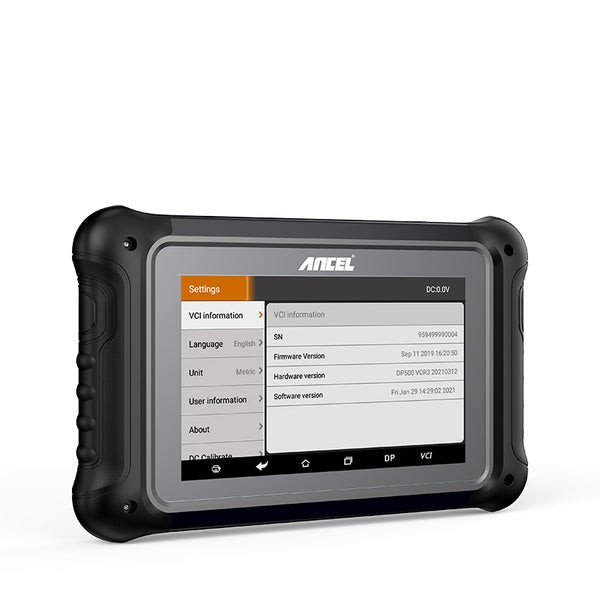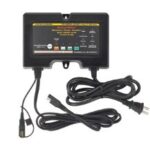Key fobs offer convenience and security for modern vehicles, allowing for keyless entry and ignition. However, losing or damaging a key fob can be a major inconvenience. Fortunately, programming a new key fob doesn’t always require a trip to an expensive dealership. OBD2 scanners have emerged as a viable tool for programming key fobs, offering a more accessible and cost-effective solution.
Understanding how to use an OBD2 scanner to program a key fob can save you both time and money. This guide will explore the capabilities of OBD2 scanners in key fob programming, the different methods available, and what you need to know to successfully program your key fob.
Understanding Key Fob Programming Methods
Programming a key fob involves syncing it with your vehicle’s immobilizer system, which is an anti-theft system that prevents the engine from starting unless the correct key is present. There are several methods to achieve this synchronization, each with its own level of complexity and required tools.
Onboard Programming
Onboard programming is a method that utilizes the vehicle’s built-in computer system to program a new key fob. This process typically involves a sequence of steps performed inside the car, often using the ignition key, door locks, and other vehicle controls. Manufacturers usually provide specific instructions for onboard programming in the vehicle owner’s manual. While convenient for some models, onboard programming is not universally applicable and may not be available for all vehicles, especially newer ones with more sophisticated security systems.
OBD2 Programming: The Diagnostic Approach
OBD2 programming leverages the vehicle’s On-Board Diagnostics II (OBD2) port, a standardized interface found in most modern cars. This port is primarily designed for vehicle diagnostics and monitoring, but it also provides a pathway to communicate with the car’s computer for various functions, including key programming.
To perform OBD2 programming, you’ll need a specialized tool – an OBD2 scanner with key programming capabilities. This scanner connects to the OBD2 port and communicates with the vehicle’s computer system to program new key fobs. This method is popular because it offers a direct and efficient way to access the vehicle’s electronic systems without requiring disassembly or complex procedures.
“On-Bench” or EEPROM Programming: Advanced Method
“On-bench” or EEPROM (Electrically Erasable Programmable Read-Only Memory) programming is a more advanced technique. It involves physically removing the vehicle’s Electronic Control Module (ECM) or immobilizer unit and programming the key fob directly using specialized equipment on a workbench.
This method targets the EEPROM chip within the ECM or immobilizer, which stores crucial key-related data. EEPROM programming allows for direct manipulation of this data to add or reprogram keys. While more complex and time-consuming, requiring technical expertise, on-bench programming can be necessary for older vehicles or those with highly secure systems that resist OBD2 or onboard programming methods. Professional locksmiths and experienced technicians often employ this method for challenging key programming tasks.
OBD2 Scanner for Key Fob Programming: A Step-by-Step Overview
Using an OBD2 scanner to program a key fob generally follows these steps:
- Connect the OBD2 Scanner: Locate the OBD2 port in your vehicle (usually under the dashboard on the driver’s side) and plug in the OBD2 scanner.
- Vehicle Identification: Turn on the ignition (without starting the engine) and allow the scanner to automatically identify your vehicle’s make, model, and year, or manually input this information.
- Navigate to Key Programming Function: Using the scanner’s interface, navigate to the key programming or immobilizer function. The exact menu names may vary depending on the scanner brand and model.
- Follow On-Screen Instructions: The scanner will display step-by-step instructions for programming the key fob. This typically involves entering security codes (if required), and following prompts to synchronize the new key fob with the vehicle’s system.
- Program the Key Fob: Follow the scanner’s prompts, which may involve pressing buttons on the new and existing key fobs in a specific sequence or holding them near the ignition.
- Test the Key Fob: Once the programming process is complete, test the new key fob to ensure it properly locks/unlocks the doors, starts the engine, and activates other remote functions.
Important Considerations:
- Scanner Compatibility: Not all OBD2 scanners are equipped with key programming capabilities. Ensure the scanner you choose specifically lists key programming as a supported function.
- Vehicle Compatibility: Even with a capable scanner, key programming via OBD2 may not be supported on all vehicle makes and models. Check the scanner’s compatibility list and your vehicle’s documentation.
- Security Codes and PINs: Some vehicles require security codes or PINs to access the key programming function. These codes may be available from the vehicle manufacturer or through specific online services.
- Professional Assistance: If you encounter difficulties or are unsure about any step, it’s always recommended to seek assistance from a qualified locksmith or automotive technician. Improper key programming can potentially lead to vehicle malfunction or security issues.
DIY Key Fob Programming vs. Professional Help
Programming your key fob at home using an OBD2 scanner offers several advantages:
- Cost Savings: Avoid expensive dealership or locksmith fees.
- Convenience: Program keys at your own pace and location.
- Learning Experience: Gain a better understanding of your vehicle’s systems.
However, DIY programming also has potential drawbacks:
- Risk of Errors: Incorrect procedures can lead to problems.
- Tool Investment: Requires purchasing an OBD2 scanner with key programming function.
- Vehicle Compatibility Limitations: DIY methods are not universally applicable.
Professional locksmiths or dealerships offer expertise and specialized equipment, which can be beneficial for:
- Complex Programming: Handling advanced security systems or “all keys lost” situations.
- Guaranteed Success: Professionals have the knowledge and tools to ensure successful programming.
- Warranties and Support: Services often come with warranties and after-sales support.
Choosing the Right OBD2 Scanner for Key Fob Programming
When selecting an OBD2 scanner to program a key fob, consider these factors:
- Key Programming Functionality: Verify that the scanner explicitly supports key programming for your vehicle make and model.
- Vehicle Compatibility: Check the scanner’s vehicle coverage list to ensure compatibility with your car.
- Ease of Use: Look for a scanner with an intuitive interface and clear on-screen instructions.
- Features and Functions: Some scanners offer additional diagnostic and reset functions beyond key programming, providing broader utility.
- Brand Reputation and Support: Choose reputable brands known for quality and customer support.
The ANCEL DP500 OBD2 scanner is a versatile tool known for its key programming capabilities and comprehensive diagnostic functions. It’s designed to simplify complex tasks like key adding, erasing, and all keys lost programming, making it a suitable option for both DIYers and professionals. Its wide vehicle compatibility and user-friendly interface make it a strong contender in the market.
Alt text: ANCEL DP500 car scanner, a professional-grade OBD2 tool for advanced diagnostics and key programming, emphasizing its brand and functionality.
FAQs About OBD2 Scanner Key Fob Programming
What tools are specifically used for key fob programming via OBD2?
OBD2 scanners with key programming functionality are the primary tools. These scanners are designed to communicate with your vehicle’s computer through the OBD2 port to perform key programming procedures.
Can I reliably program keys myself using an OBD2 scanner, or is professional help always better?
For many common vehicles, DIY key programming with an OBD2 scanner is feasible and reliable, especially for adding a spare key. However, for complex situations, high-security vehicles, or if you lack confidence, professional locksmiths or dealerships offer expertise and guaranteed results.
How long does key programming using an OBD2 scanner typically take?
Simple key programming tasks with an OBD2 scanner can often be completed within 15-30 minutes. More complex procedures, such as “all keys lost” programming, might take longer, potentially up to an hour or more, depending on the vehicle and scanner.
Conclusion
Using an OBD2 scanner to program a key fob presents a practical and increasingly popular alternative to traditional dealership programming. By understanding the methods, choosing the right tools, and following the correct procedures, you can effectively program key fobs and manage your vehicle’s security system. Whether you opt for DIY programming or seek professional assistance, knowing your options empowers you to handle key fob replacement and programming efficiently and affordably.
Explore the ANCEL range of OBD2 scanners to find the perfect tool for your key programming needs and take control of your car key management.
Recommended Similar Articles:

